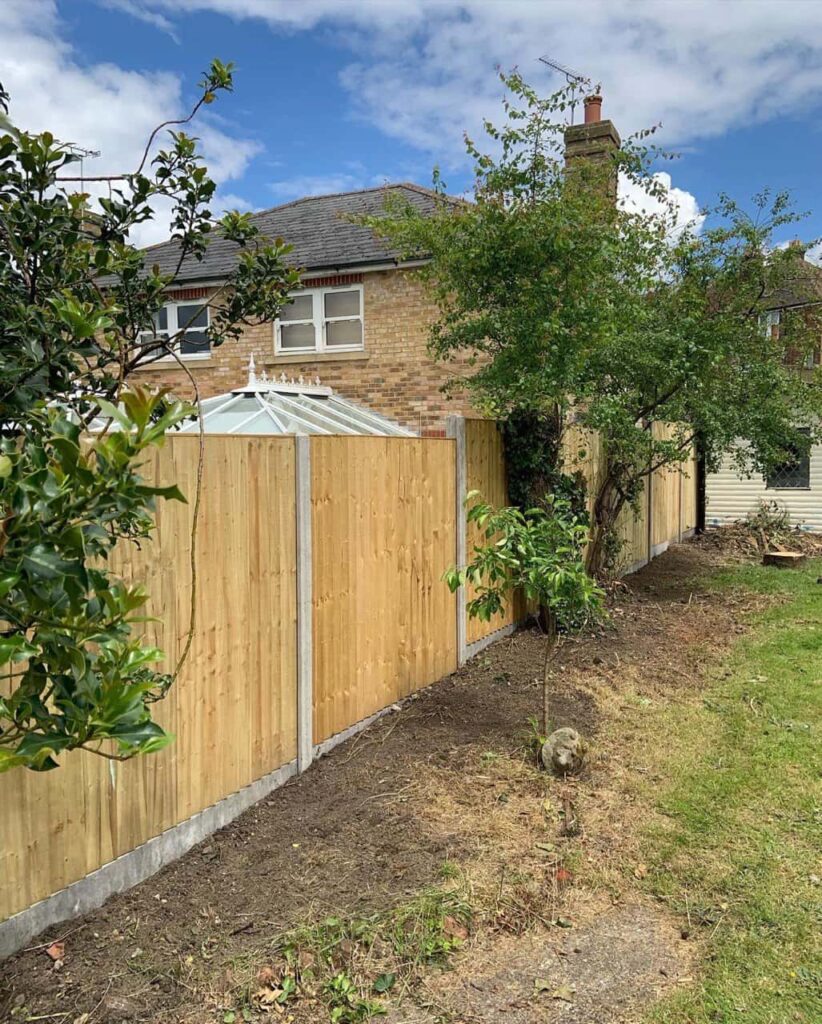Expert Tips to Prevent Warping and Rot in Post and Rail Fencing
Introduction
Post and rail fencing is a popular choice for rural properties, equestrian facilities, and large gardens due to its durability, classic appearance, and ability to define boundaries effectively. However, like all outdoor timber structures, post and rail fences are exposed to the elements, making them vulnerable to warping and rot if not properly maintained.
At Fast Fix Fencing Red Lodge, we specialise in high-quality fencing solutions in Red Lodge, Suffolk, ensuring that fences remain strong and long-lasting. In this guide, we provide expert tips on how to protect post and rail fencing from damage, preserving its appearance and functionality for years to come.
Understanding Warping and Rot in Wooden Fencing
What Causes Warping?
Warping occurs when wood absorbs moisture and then dries unevenly. As the timber expands and contracts, it can twist, bend, or cup, leading to structural instability and an uneven fence line. The main causes of warping include:
- Exposure to fluctuating moisture levels
- Poor-quality or untreated wood
- Incorrect installation, such as inadequate spacing between rails
- Sudden temperature changes
What Causes Rot?
Wood rot is caused by prolonged exposure to moisture, which creates the perfect conditions for fungi to break down the timber. The two primary types of rot affecting fencing are:
- Wet rot – Occurs when timber remains damp for long periods, causing it to become soft and spongy.
- Dry rot – Develops when fungi consume the wood’s fibres, leading to brittleness and decay.
Rot not only weakens the fence but also creates a safety hazard if posts become unstable.
How to Prevent Warping in Post and Rail Fencing
1. Choose High-Quality, Treated Timber
Investing in pressure-treated or hardwood fencing significantly reduces the risk of warping. Pressure-treated wood is infused with preservatives that help resist moisture absorption and fungal growth. Hardwoods such as oak and cedar naturally contain oils that protect against water damage.
2. Ensure Proper Installation
Correct installation is crucial to minimising warping. Key considerations include:
- Using well-spaced rails – Allowing sufficient gaps between rails helps accommodate natural wood expansion and contraction.
- Securing posts at the correct depth – Fence posts should be buried at least one-third of their length into the ground to provide stability.
- Aligning rails properly – Horizontal rails should be evenly spaced and fastened securely to prevent movement.
3. Apply a Protective Sealant
A high-quality wood sealant or stain acts as a barrier against moisture and UV exposure, helping to maintain the wood’s shape. Reapply sealants annually or as recommended by the manufacturer to ensure continued protection.
4. Allow the Wood to Acclimatise Before Installation
Newly purchased timber should be allowed to adjust to the local climate before being installed. Storing wood in a dry, shaded area for a few weeks before construction can reduce the risk of warping once the fence is in place.
How to Prevent Rot in Post and Rail Fencing
1. Protect Fence Posts from Ground Moisture
Since fence posts are in direct contact with the soil, they are the most vulnerable to rot. Preventative measures include:
- Using concrete post bases – Elevating posts slightly above the ground using concrete prevents direct soil contact.
- Applying post protectors – Wrapping the base of posts with protective sleeves or bitumen coatings reduces moisture absorption.
- Using gravel for drainage – Placing gravel around the post base improves water drainage, reducing dampness.
2. Maintain Proper Drainage Around the Fence
Standing water near the base of a fence accelerates rot. To improve drainage:
- Ensure the surrounding ground slopes away from the fence.
- Avoid planting vegetation too close to the fence, as it can trap moisture.
- Regularly clear debris such as leaves and dirt from the fence line.
3. Regularly Inspect for Signs of Decay
Routine inspections help detect early signs of rot before they become serious. Check for:
- Discoloured, soft, or crumbling wood
- Mould or fungal growth
- Loose or unstable fence posts
Replacing affected sections promptly prevents further deterioration and extends the fence’s lifespan.
4. Apply a Wood Preservative
Using a wood preservative enhances the natural resistance of timber to fungi and insects. Look for products specifically designed for outdoor fencing and reapply as part of an annual maintenance routine.
Why Choose Fast Fix Fencing Red Lodge?
For homeowners and property managers in Red Lodge, Suffolk, Fast Fix Fencing Red Lodge offers expert fencing solutions, including installation, maintenance, and repairs. Our team ensures that post and rail fencing remains sturdy, attractive, and long-lasting, using high-quality materials and professional craftsmanship.
Conclusion
Warping and rot are common issues that can compromise the strength and appearance of post and rail fencing. However, with the right materials, installation techniques, and regular maintenance, these problems can be minimised. Investing in high-quality timber, ensuring proper drainage, and applying protective treatments will help keep fences in excellent condition for years.
If you need professional fencing services in Red Lodge, Suffolk, contact Fast Fix Fencing Red Lodge today. Our team is ready to provide expert advice and high-quality solutions to protect and maintain your fencing.
Expert Tips to Prevent Warping and Rot in Post and Rail Fencing
Introduction
Post and rail fencing is a popular choice for rural properties, equestrian facilities, and large gardens due to its durability, classic appearance, and ability to define boundaries effectively. However, like all outdoor timber structures, post and rail fences are exposed to the elements, making them vulnerable to warping and rot if not properly maintained.
At Fast Fix Fencing Red Lodge, we specialise in high-quality fencing solutions in Red Lodge, Suffolk, ensuring that fences remain strong and long-lasting. In this guide, we provide expert tips on how to protect post and rail fencing from damage, preserving its appearance and functionality for years to come.
Understanding Warping and Rot in Wooden Fencing
What Causes Warping?
Warping occurs when wood absorbs moisture and then dries unevenly. As the timber expands and contracts, it can twist, bend, or cup, leading to structural instability and an uneven fence line. The main causes of warping include:
- Exposure to fluctuating moisture levels
- Poor-quality or untreated wood
- Incorrect installation, such as inadequate spacing between rails
- Sudden temperature changes
What Causes Rot?
Wood rot is caused by prolonged exposure to moisture, which creates the perfect conditions for fungi to break down the timber. The two primary types of rot affecting fencing are:
- Wet rot – Occurs when timber remains damp for long periods, causing it to become soft and spongy.
- Dry rot – Develops when fungi consume the wood’s fibres, leading to brittleness and decay.
Rot not only weakens the fence but also creates a safety hazard if posts become unstable.
How to Prevent Warping in Post and Rail Fencing
1. Choose High-Quality, Treated Timber
Investing in pressure-treated or hardwood fencing significantly reduces the risk of warping. Pressure-treated wood is infused with preservatives that help resist moisture absorption and fungal growth. Hardwoods such as oak and cedar naturally contain oils that protect against water damage.
2. Ensure Proper Installation
Correct installation is crucial to minimising warping. Key considerations include:
- Using well-spaced rails – Allowing sufficient gaps between rails helps accommodate natural wood expansion and contraction.
- Securing posts at the correct depth – Fence posts should be buried at least one-third of their length into the ground to provide stability.
- Aligning rails properly – Horizontal rails should be evenly spaced and fastened securely to prevent movement.
3. Apply a Protective Sealant
A high-quality wood sealant or stain acts as a barrier against moisture and UV exposure, helping to maintain the wood’s shape. Reapply sealants annually or as recommended by the manufacturer to ensure continued protection.
4. Allow the Wood to Acclimatise Before Installation
Newly purchased timber should be allowed to adjust to the local climate before being installed. Storing wood in a dry, shaded area for a few weeks before construction can reduce the risk of warping once the fence is in place.
How to Prevent Rot in Post and Rail Fencing
1. Protect Fence Posts from Ground Moisture
Since fence posts are in direct contact with the soil, they are the most vulnerable to rot. Preventative measures include:
- Using concrete post bases – Elevating posts slightly above the ground using concrete prevents direct soil contact.
- Applying post protectors – Wrapping the base of posts with protective sleeves or bitumen coatings reduces moisture absorption.
- Using gravel for drainage – Placing gravel around the post base improves water drainage, reducing dampness.
2. Maintain Proper Drainage Around the Fence
Standing water near the base of a fence accelerates rot. To improve drainage:
- Ensure the surrounding ground slopes away from the fence.
- Avoid planting vegetation too close to the fence, as it can trap moisture.
- Regularly clear debris such as leaves and dirt from the fence line.
3. Regularly Inspect for Signs of Decay
Routine inspections help detect early signs of rot before they become serious. Check for:
- Discoloured, soft, or crumbling wood
- Mould or fungal growth
- Loose or unstable fence posts
Replacing affected sections promptly prevents further deterioration and extends the fence’s lifespan.
4. Apply a Wood Preservative
Using a wood preservative enhances the natural resistance of timber to fungi and insects. Look for products specifically designed for outdoor fencing and reapply as part of an annual maintenance routine.
Why Choose Fast Fix Fencing Red Lodge?
For homeowners and property managers in Red Lodge, Suffolk, Fast Fix Fencing Red Lodge offers expert fencing solutions, including installation, maintenance, and repairs. Our team ensures that post and rail fencing remains sturdy, attractive, and long-lasting, using high-quality materials and professional craftsmanship.
Conclusion
Warping and rot are common issues that can compromise the strength and appearance of post and rail fencing. However, with the right materials, installation techniques, and regular maintenance, these problems can be minimised. Investing in high-quality timber, ensuring proper drainage, and applying protective treatments will help keep fences in excellent condition for years.
If you need professional fencing services in Red Lodge, Suffolk, contact Fast Fix Fencing Red Lodge today. Our team is ready to provide expert advice and high-quality solutions to protect and maintain your fencing.
Call us on: 01638 59 1475
Click here to find out more about Fast Fix Fencing Red Lodge
Click here to complete our contact form and see how we can help with your fencing needs.

